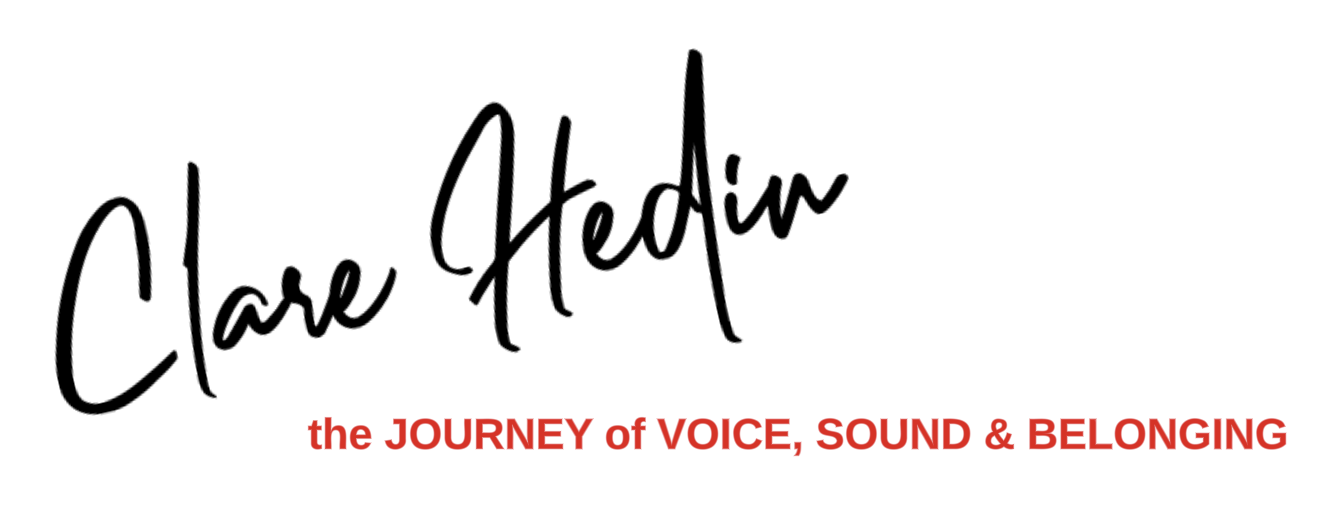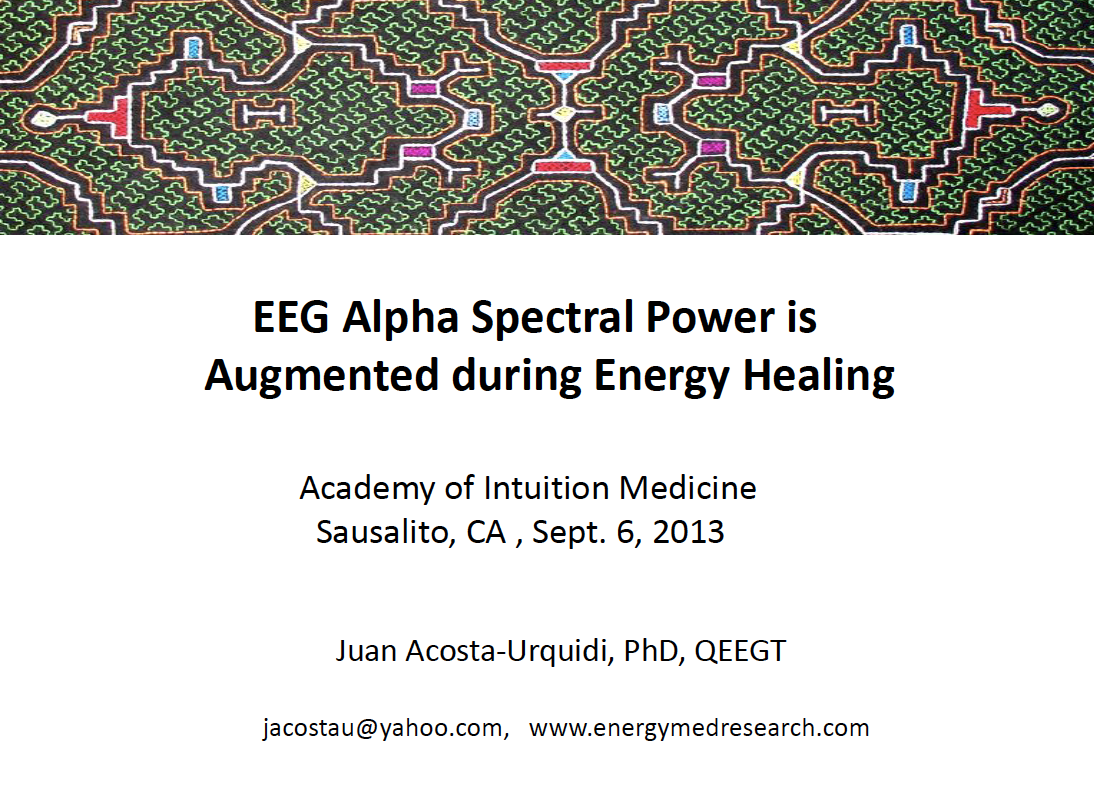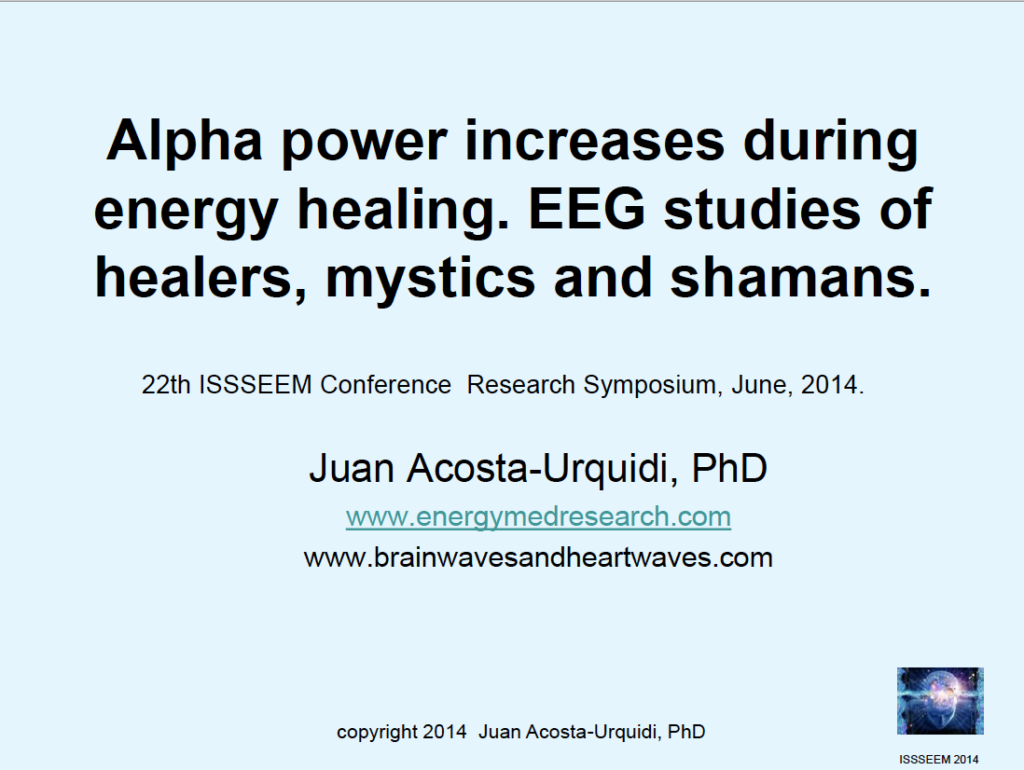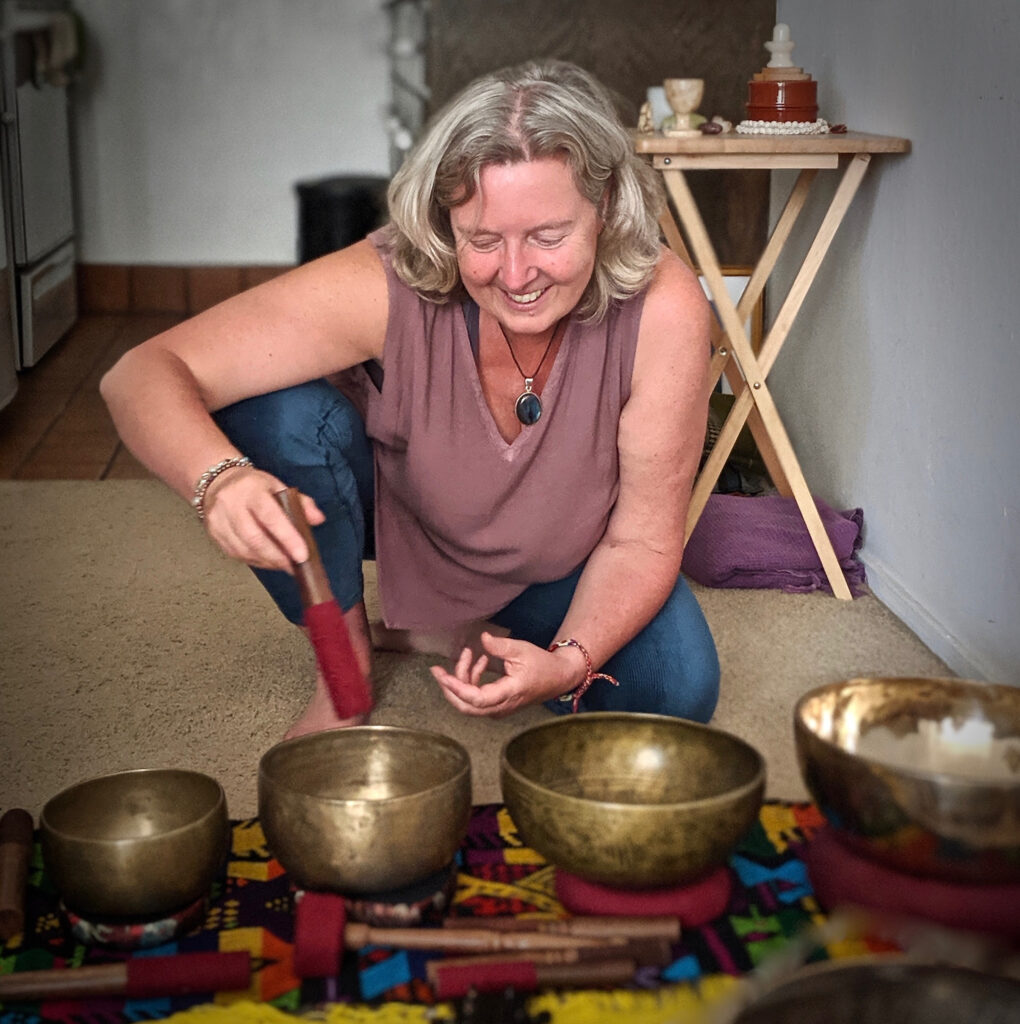EEG research – Clare’s alpha findings
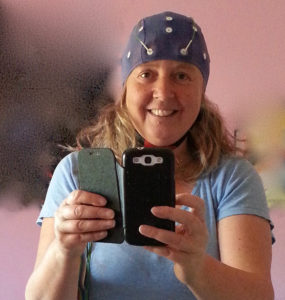 In 2014, Clare’s brainwaves were measured in an EEG reading whilst doing Reiki energy/Light Body/Emotional Body Balancing healing and Sound Healing. The findings were stunning. To date, the average alpha power increase amongst a sample of 30 healers giving sessions was 80-100%; Clare’s went up by 393%. Research shows that Alpha is connected to both healing and creativity. ¹Alpha power relates to a person’s aptitude for creative thought (Psychology Today, April, 2015) – so it’s spot on that she has devoted her life to being an artist, and a healer, and educating others about accessing their creativity more…. she spends a lot of her time in the alpha zone!
In 2014, Clare’s brainwaves were measured in an EEG reading whilst doing Reiki energy/Light Body/Emotional Body Balancing healing and Sound Healing. The findings were stunning. To date, the average alpha power increase amongst a sample of 30 healers giving sessions was 80-100%; Clare’s went up by 393%. Research shows that Alpha is connected to both healing and creativity. ¹Alpha power relates to a person’s aptitude for creative thought (Psychology Today, April, 2015) – so it’s spot on that she has devoted her life to being an artist, and a healer, and educating others about accessing their creativity more…. she spends a lot of her time in the alpha zone!
*Dr. Juan Acosta-Urquidi, neuroscientist, has been conducting EEG tests with healers, mystics, and
“Initially, he worked with QEEG to test photic and auditory driving responses to mind machines. He then joined an NIH-funded project in alternative medicine at the University of Washington Medical Center to study pulsed magnetotherapy treatment on neurologic patients suffering MS. While still there, a chance discovery lead him to pursue research with Energy Healers at a time when he was initiated as a Reiki Master. Using an electro-crystal detector device he recorded electromagnetic signals emanating from Energy Healers during the state of “sending”, or “channeling” energy. He extended this research by simultaneously measuring EEG in a subset of the healers sample, documenting the shifting brainwave patterns as the healers transit through different states of consciousness during the energy healing state.” [More on Acosta-Urquidi]
Clare Hedin EEG results showing 393% Alpha power increase. [Download pdf]

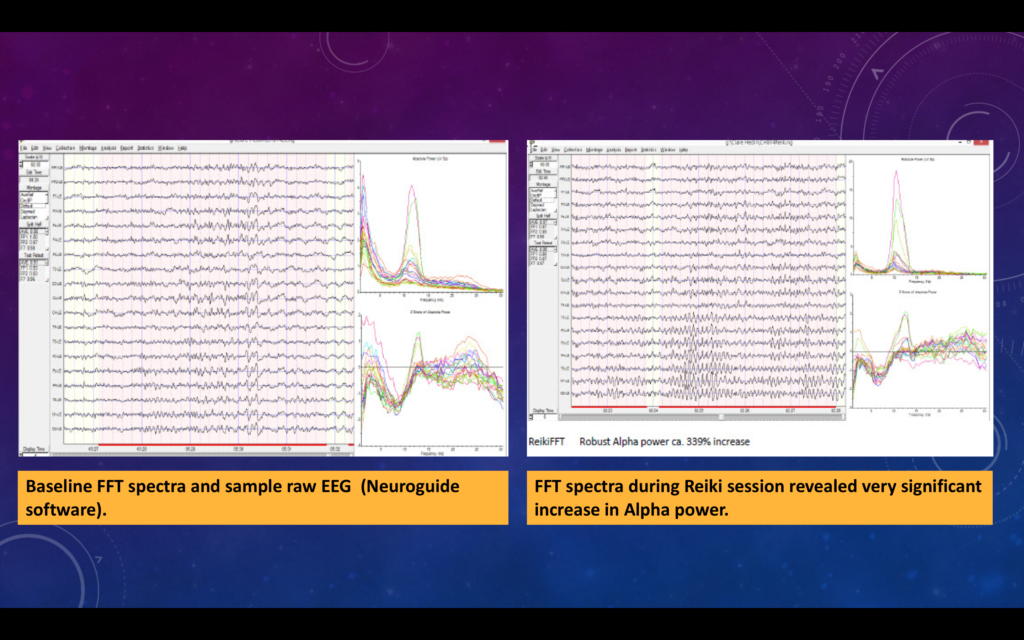

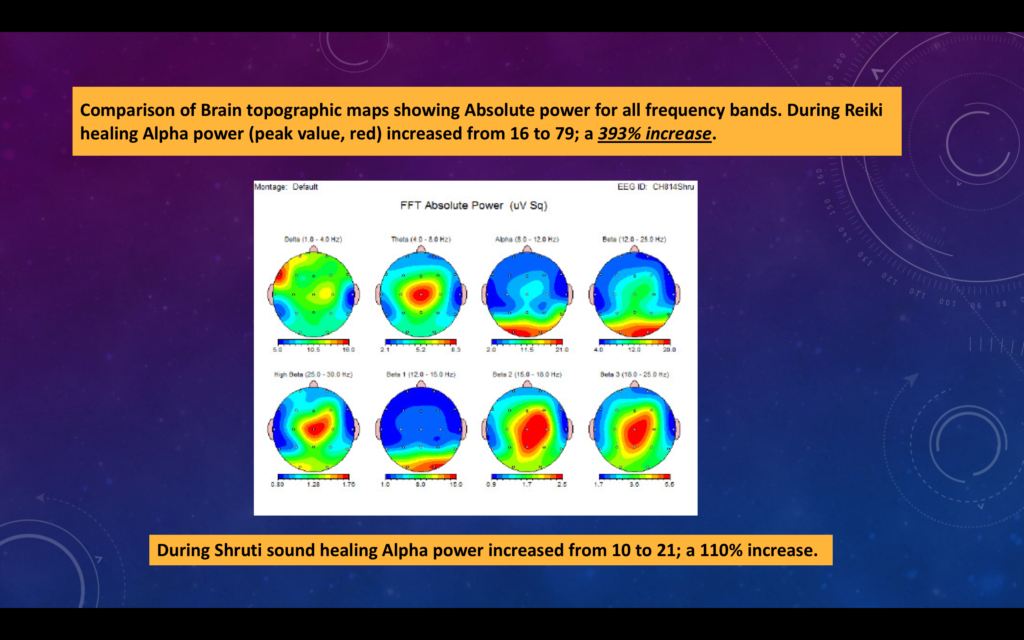
DOWNLOAD FULL PPT PRESENTATION
- “Delta waves (.5 to 3 Hz) are the slowest brain waves and occur primarily during our deepest state of dreamless sleep.
- Theta waves (3 to 8 Hz) occur during sleep but have also been observed in the deepest states of Zen meditation.
- Alpha waves (8 to 12 Hz) are present when your brain is in an idling default-state typically created when you’re daydreaming or consciously practicing mindfulness or meditation. Alpha waves can also be created by doing aerobic exercise.
- Beta waves (12-30 Hz) typically dominate our normal waking states of consciousness and occur when attention is directed towards cognitive and other tasks. Beta is a ‘fast’ wave activity that is present when we are alert, attentive, focused, and engaged in problem solving or decision making. Depression and anxiety have also been linked to beta waves because they can lead to “rut-like” thinking patterns.
- Gamma waves (25 to 100 Hz) typically hover around 40 Hz and are the fastest of the brain wave bandwiths. Gamma waves relate to simultaneous processing of information from different brain areas and have been associated with higher states of conscious perception.”
Peer review studies:
EEG ALPHA POWER & CREATIVE IDEATION: Fink & Benedek, Neuroscience Biobehavioral Reviews 2014 & National Library of Medicine 2014
“Neuroscientific studies revealed first insights into neural mechanisms underlying creativity, but existing findings are highly variegated and often inconsistent. Despite the disappointing picture on the neuroscience of creativity drawn in recent reviews, there appears to be robust evidence that EEG alpha power is particularly sensitive to various creativity-related demands involved in creative ideation. Alpha power varies as a function of creativity-related task demands and the originality of ideas, is positively related to an individual’s creativity level, and has been observed to increase as a result of creativity interventions…”
INTELLIGENCE IN CREATIVE PROCESSES: An EEG study. Saskia Jaarsveld, Andreas Fink, Marcus Rinner, Daniela Schwab, Mathias Benedek, Thomas Lachmann, 2015
“Taken together, we showed with EEG data that abilities considered to belong to the construct of intelligence interact with abilities considered to belong to the construct of creativity. Unlike the classical approach of studying intelligence in defined problem spaces, we show that intelligence can be studied operating in ill-defined spaces. We used the Creative Reasoning Test (CRT, Jaarsveld et al., 2010, 2012), which asks participants to create on an empty form an original and most complex 3 × 3 matrix that should, in principle, be solvable by another person. This task involves generating components and the relationship(s) that connect them and yields a cognitive thinking process in which both intelligent and creative abilities play a role. The findings of this study suggest that alpha synchronization was most pronounced in those episodes of the creative reasoning process in which information processing is most demanding and complex.”
The time-course of EEG alpha power changes in creative ideation: Schwab, Daniela Benedek, Mathias Papousek, Ilona Weiss, Elisabeth M. Fink, Andreas, 2014 (FULL ARTICLE)
“Alpha power changes during idea generation followed a characteristic time course: we found a general increase of alpha power at the beginning of idea generation that was followed by a decrease and finally by a re-increase of alpha prior to responding that was most pronounced at parietal and temporal sites of the right hemisphere. Additionally, the production of more original ideas was accompanied by increasing hemispheric asymmetry (more alpha in the right than left hemisphere) with increasing duration of the idea generation period. The observed time course of brain activity may reflect the progression of different but well-known stages in the idea generation process: that is the initial retrieval of common and old ideas followed by the actual generation of novel and more creative ideas by overcoming typical responses through processes of mental simulation and imagination.”
Neurophysiological correlates of musical creativity: The example of improvisation; Dikaya, Liudmila A. Skirtach, Irina A. 2015 (FULL ARTICLE)
“However, a person’s own inner motivation to solve a problem is the integral component in the creative process. Therefore, the study of brain activity should be carried out when research participants solve professional or daily problems related to real life. Most studies use laboratory measures of creativity, and it is unclear how these measures are related to observable behaviors in the real world… Musicians are a particularly relevant population to study because their intensive, long-term training may have a significant impact on neural circuits that are associated with creativity” (Gibson, Folley, & Park, 2009)
“Musical creativity is defined as creating something novel in any sphere of musical art, reaching an artistic goal that reflects some important sides of reality in a unique, figurative way.” (Villarreal et al., 2013).
NEUROSCIENCE & BIOBEHAVIORAL REVIEWS: Excerpts from the Neuroscience and Biobehavioral Reviews, Dec 2012: ‘EEG Alpha power and Creative ideation’. Andreas Fink, Mathias Benedek. Institute of Psychology, University of Graz, Austria.
“… there appears to be robust evidence that EEG alpha power is particularly sensitive to various creativity-related demands involved in creative ideation… We conclude that increased alpha power during creative ideation is among the most consistent findings in neuroscientific research on creativity and discuss possible future directions to better understand the manifold brain mechanisms involved in creativity.”
INTERNATIONAL JOURNAL OF PSYCHOPHYSIOLOGY, March 2012: ‘Tackling creativity at its roots: Evidence for different patterns of EEG alpha activity related to convergent and divergent modes of task processing’, August 2011. Emanuel Jauk, Mathias Benedek, Aljoscha C. Neubauer. Department of Psychology, University of Graz, Austria.
“… Neuroscientific studies typically find higher event-related synchronization in the EEG alpha rhythm for individuals engaged in creative ideation tasks compared to intelligence-related tasks… Moreover, divergent processing was found to involve higher task-related EEG alpha power than convergent processing… EEG alpha synchronization can hence explicitly be associated with divergent cognitive processing.”
—————————————————————————————————————–
RESEARCHER *Juan Acosta-Urquidi, Phd, QEEGT
Ph.D. in Cellular Neurophysiology, 1980, University of Toronto, Canada.
MSc. Neurobiology, McGill University, Montreal, Canada.
B.A. Biophysics, University of California, Berkeley, CA.
Juan is a QEEGT Nationally Certified QEEG Technologist, American Board of Certified QEEG, 1996; Diploma Neural Training, University of Washington (UW), 1997. He has BCIA certified trainings in Biofeedback and Neurofeedback, 2005-6. BrainMaster Neurofeedback short courses 2010-12.
Prior to his work in healthcare as a neurotherapist, he was a research scientist in Neurophysiology examining the cellular and molecular basis of learning and memory in simple models of nervous systems. Dr. Acosta has worked in the clinic with a variety of clients, including: ADD/ADHD children, adolescents and adults, closed-head injury patients, depression and anxiety disorders, CFS (chronic fatigue syndrome) and ASD (autism spectrum disorders). He has also worked extensively with relaxation and stress management techniques. He conducted research at the University of Washington Medical Center, Seattle, WA in Energy Medicine with pulsed magnetotherapy, as an alternative treatment for MS (multiple sclerosis) patients.
Since 1997 he has done pioneering research with energy healers, mapping brainwaves (EEG) and heartwaves (HRV analysis) during energy healing sessions. He has explored EEG correlates of psychedelic-induced ASC, including Salvia d. and DMT, meditation, Kundalini activation and neurostimulation technologies.
